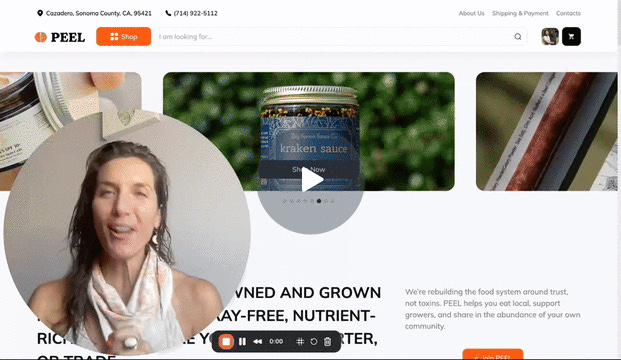
Last week it was all about potatoes. This week? We’re going deep into the world of GMOs —
genetically modified organisms.
I know, I know… it’s not quite as fun as a giant potato statue, but hear me out:
💥 GMOs aren’t just “science-y” plants — they’re part of a system that saturates your food with chemicals your body was never designed to handle.
The vast majority are engineered for one reason:
To survive repeated drenching with herbicides or to produce their own built-in insecticide.
That means when you eat them, you’re eating the residue from those sprays and the plant’s own pesticide from the inside out. Over time, that’s a recipe for gut damage, hormone disruption, inflammation, and potentially higher cancer risk. This isn’t about fear — it’s about knowing the truth so you can choose better.
🌱 The Beginning of GMOs
In the mid-1990s, the first GMO crops hit U.S. farms: corn, soybeans, and cotton that were genetically altered in a lab to resist pests or tolerate herbicides like glyphosate (aka, Roundup). Instead of farmers working with nature’s diversity, they were promised a shortcut: “bigger yields, fewer problems.”
The reality? We created plants that could survive heavy chemical sprays — and so we sprayed more. And more. And more.

🌽 Why It Matters for Your Body
When a food is genetically modified, it’s not just the DNA that changes — it’s the whole farming system around it. More herbicides = more residues on your food.
And our bodies? They aren’t designed to process a daily micro-dose of weed killer. Studies link glyphosate exposure to:
Gut microbiome disruption — glyphosate acts as an antibiotic in your gut, killing off beneficial bacteria and letting the troublemakers thrive.
Endocrine (hormone) interference — even tiny amounts can disrupt the balance of estrogen, testosterone, and thyroid hormones.
Cell damage and oxidative stress — linked to increased inflammation, which is the root of many chronic conditions.
Increased cancer rates — The World Health Organization’s International Agency for Research on Cancer (IARC) has classified glyphosate, the herbicide used on most GMO crops, as “probably carcinogenic to humans,” based on evidence connecting it to non-Hodgkin lymphoma.
And because GMO crops are often engineered to produce their own insecticide (example : Bt toxin), you’re not just getting sprayed chemicals — you’re eating a plant that contains its own built-in pesticide in every single bite. That pesticide doesn’t just disappear when you digest it!

🛑 Bioengineered = GMO? Here’s the Deal
.
Since 2022, the U.S. has required certain genetically modified foods to be labeled as “bioengineered” (BE). That’s the USDA’s softer, friendlier term for GMO. But here’s the catch:
Not every GMO product has to carry the BE label — especially if it’s highly processed and no detectable DNA remains (looking at you, corn syrup).
Many animal products won’t carry the label even if the animals were fed GMO feed.
And yes, BE and GMO are basically the same thing in most consumer contexts — “bioengineered” is just the rebrand.

🥕 Let’s get specific … Two GMO Case Studies
1. Corn: The Glyphosate Survivor
Corn is the poster child of GMOs in America. In the mid-90s, “Roundup Ready” corn was introduced so farmers could spray entire fields with glyphosate without killing the crop. It also led to Bt corn — corn genetically altered to produce its own insecticide inside every cell.
The outcome? Over 90% of U.S. corn is now GMO. Herbicide use skyrocketed. “Superweeds” resistant to glyphosate emerged. And because corn is in everything (cereal, chips, sweeteners, livestock feed), GMO corn is woven into the fabric of the U.S. diet.
2. Papaya: The Virus Fighter
In the 1990s, Hawaiian papaya crops were being devastated by ringspot virus. Scientists created the GMO “Rainbow Papaya” by inserting a bit of the virus’s DNA into the plant — like a built-in vaccine. It saved the industry, and today most Hawaiian papayas are GMO.
This is one of the few GMO “success” stories where the intention was purely to save a crop — but it still came with trade-offs: reduced seed diversity, reliance on specific patented seeds, and market restrictions in countries that don’t allow GMOs.
⚖️ The Regulation Game
Here’s the tricky part: GMO oversight in the U.S. is… let’s just say… relaxed. The USDA, FDA, and EPA share the job, but much of the safety testing comes from the very companies that create the seeds. And once a GMO crop is approved, there’s no long-term human health testing required.
💔 The Big Picture Harm
The harm of GMOs isn’t just what they might do to you — it’s what they’ve already done to our ecosystems. Monocultures (giant fields of the same GMO plant) have pushed out biodiversity. Pesticide-resistant “superweeds” are spreading. Insects we actually need are disappearing.
And small farmers?
They’re trapped into buying seeds year after year from a handful of giant corporations.

🌎 Where We Go From Here
Not every GMO is evil, but the way they’ve been used in our food system is the opposite of regenerative.
We need diversity, local adaptation, and farmers who aren’t forced to grow crops designed for chemical dependence.
The good news? Every time you buy from a small, spray-free, local grower, you’re supporting a different future. A food system that’s as resilient as the wild potatoes of the Andes.
So next time you see “bioengineered” on a label? Think about the story behind it — and where you want your food (and your health) to come from.
READ OUR LATEST EMAIL LAUNCH AND BE THE FIRST TO SIGN UP FOR PEEL !
with all our love
to the birds , the plants, and to our bodies
- Em and PEEL
Let’s keep learning together! Comment below what you want to hear about next week!





